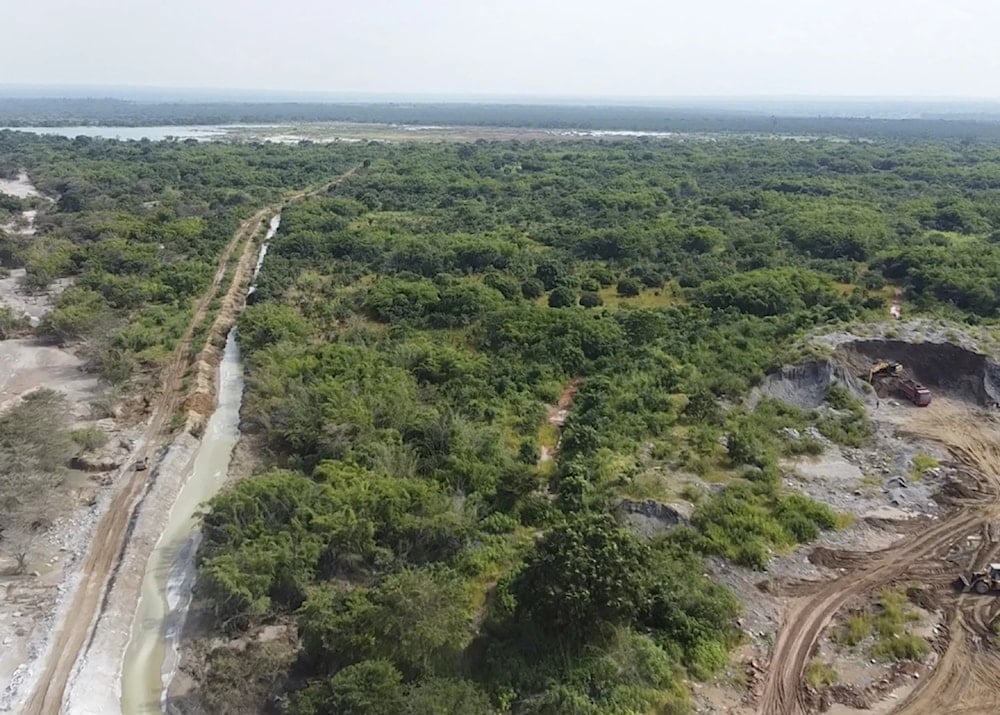Toxic harvest: Heavy metals pollute 15% of world’s cropland
Around one-sixth of the world’s cropland is polluted with toxic heavy metals, threatening food safety, human health, and the environment for up to 1.4 billion people.
-
 This image was taken from a February 19, 2025, video showing the path of mine waste in a river near a Sino-Metals Leach Zambia mine near Kitwe (AP)
This image was taken from a February 19, 2025, video showing the path of mine waste in a river near a Sino-Metals Leach Zambia mine near Kitwe (AP)
Around one-sixth of the world's cropland is contaminated with toxic heavy metals, researchers have found, putting up to 1.4 billion people in high-risk areas. Between 14-17% of global cropland (approximately 242 million hectares) contains hazardous levels of metals like arsenic, cadmium, cobalt, chromium, copper, nickel, and lead, exceeding safety thresholds for both agriculture and human health.
The study, which analyzed data from over 1,000 regional studies and incorporated machine learning, revealed alarming levels of pollution in soils, food, and water.
Dr. Liz Rylott from the University of York, who was not involved in the research, explained that these metals cause severe health issues, such as skin lesions, nerve damage, organ dysfunction, and even cancer.
Drivers and trends
Heavy metal pollution in soil is driven by both natural sources and human activities. It harms ecosystems, reduces crop yields, and threatens water and food safety due to bioaccumulation in animals. The contamination often lasts for decades once it enters the soil.
Human activities are identified as the primary source of soil pollution, and the FAO called for greater political support and increased investment toward maintaining healthy soils to ensure safe and nutritious food, which is essential for achieving the Sustainable Development Goals and Zero Hunger.
Soil pollution affects:
— Food and Agriculture Organization (@FAO) July 23, 2019
🍅the food we eat
💧the water we drink
💨the air we breathe
👩our health
🐛the health of all organisms on the planet.#StopSoilPollution #soils pic.twitter.com/e4UvDl1Wwo
As demand for critical metals rises, particularly for green technologies like wind turbines and electric vehicles, the pollution is expected to worsen. The study estimates that between 900 million and 1.4 billion people live in areas with high levels of toxic metal contamination.
Cadmium was found to be the most widespread, with high concentrations detected in South and East Asia, parts of the Middle East, and Africa. Dr. Rylott highlighted the global nature of the issue, stating that addressing this problem will require international cooperation, especially since many affected regions are in low- and middle-income countries, where it contributes to poverty. The impact of contaminated crops entering the global food supply remains unclear.
Using plants to recover metals
— New Phytologist (@NewPhyt) March 13, 2025
Rylott and van der Ent @LizRylott @EntAntony
📖 https://t.co/nZQXYRQrr4 pic.twitter.com/0srnpPczKS
Some researchers have explored possible solutions to deal with polluted soil, one of which is called phytomining. This process uses certain types of plants to pull valuable metals, like zinc or even gold, out of the soil. The idea grew from an earlier method known as phytoremediation, where plants are used to clean up pollution by absorbing or breaking down harmful substances in the environment.
Phytomining takes this a step further by not just cleaning the soil but also by collecting useful metals in the process, which can then be sold. It’s a way to both help the environment and make use of otherwise contaminated land.
Phytomining uses special plants called hyperaccumulators that naturally soak up large amounts of metals from the soil. These plants can grow in metal-rich areas and still stay healthy, making them useful for cleaning up polluted land and collecting valuable metals at the same time.

 3 Min Read
3 Min Read








